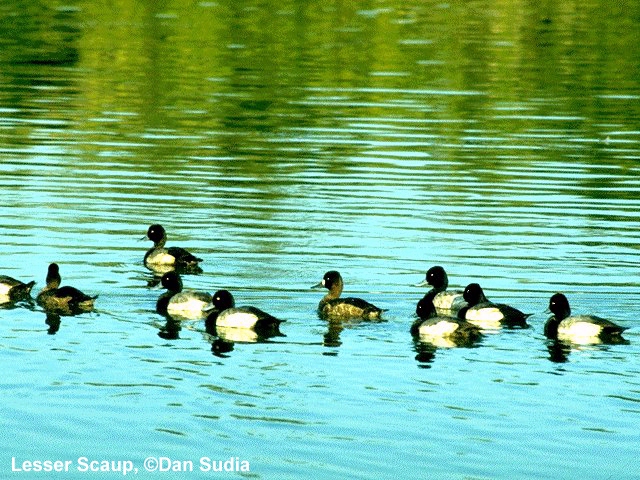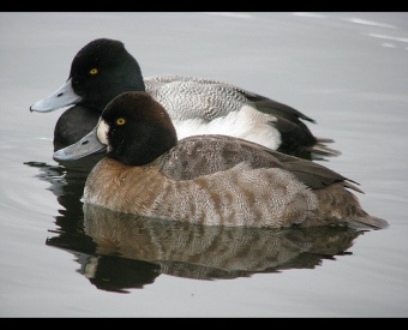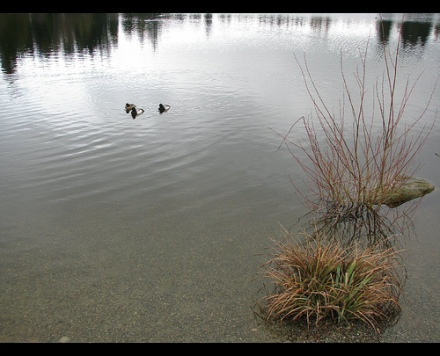
picture by J R Compton. http://www.JRCompton.com/photos/The_Birds/J/
Reproduction

Aythya affinis pair up with a new mate each year in the latter part of migration, which makes them one of the latest ducks in North America to search out a partner. During this time, it is crucial that the female Lesser Scaup have adequate lipids as a part of her nutrient reserve to ensure successful breeding. After mating with her partner, the female Scaup begins nesting towards the end of May or even into June. She is responsible for building her nest all on her own, creating it into a bowl shape from grasses and other nearby vegetation and then finishing it off with a lining of down. The female chooses to do this in an area of dry land somewhere near the water with dense brush.
Female Lesser Scaup usually lay a clutch size of
around 6-14 eggs each year that are a pale to dark olive color or
can be a greenish buff. When this time comes, the female will lay
only one egg each day until her clutch is finally completed. As soon as her eggs are laid, incubation
ti me begins and it's the mother's job to keep them warm for about 21
to 27 days. Her mate, the male Lesser Scaup, abandons her as soon as
this time starts.
me begins and it's the mother's job to keep them warm for about 21
to 27 days. Her mate, the male Lesser Scaup, abandons her as soon as
this time starts.
When hatching day comes, the baby ducks come out
with downy fur and their eyes already open. They only wait as long
as it takes to dry off before they leave the nest to go out and
explore the world for the first time. When this time comes, with
their mother leading the way, the Scaup ducklings head straight to
water and are able to begin feeding themselves independently.
Somewhere around the age of 47 to 54 days old these ducklings
begin fledging, which is the process of growing their adult feathers
that in turn allow for them to learn to fly. This ends up ocurring in late August to mid-September
each year. After approximately 2 to 5 weeks of help and guidance from their mother
after birth,
the young Lesser Scaup go off to experience life on their own.
Males, and females alike, will reach reproductive maturity at
approximately 1 year of age, and will then
 begin breeding and
raising young of their own each year.
begin breeding and
raising young of their own each year.
The longest lifespan of a Lesser Scaup living in the wild on records thus far is 18 years and 4 months. The bulk of mortality takes place in the ducklings' first few weeks of life, when they are most subject to the potential threats of predation and the stress of colder temperatures. It has actually been found that Aythya affinis young which hatch from larger eggs, therefore having more nutrient reserves, later in the year, therefore exposed to less frigid temperatures, do possess increased survival rates.
To find out how Aythya affinis interact
with other organisms visit my
Interactions page
Back to HOME